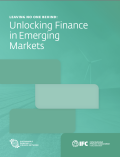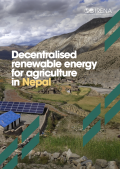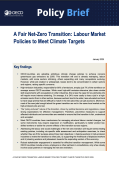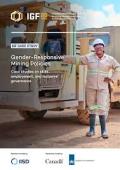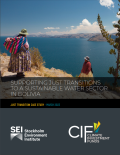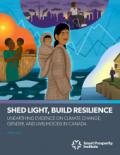
Although a range of other policies and interventions play a role, there is strong evidence that economic growth is the most effective means of combating global poverty. However, the sustainability of the current economic growth path is a serious concern, inasmuch as it often drives the depletion of the very resources and services on which it relies. Because the poorest communities are often the most economically dependent on environmental resources and services and least able to cope with the consequences of their degradation, unsustainable growth threatens the effectiveness of poverty reduction and social inclusion.
Green growth aims to build a model of economic growth that simultaneously achieves poverty reduction, social inclusion and environmental sustainability. In its 2015 report Shock Waves: Managing the Impacts of Climate Change on Poverty, the World Bank provides guidance on how to create a “win-win” situation so that climate change policies contribute to poverty reduction and poverty-reduction policies contribute to climate change mitigation and resilience building. (World Bank, 2015).
Relevance to the SDGs
Eradicating poverty and promoting equality are indispensable for sustainable development. Sustainable Development Goal (SDG) 1 aims to eradicate poverty in all forms everywhere by implementing nationally appropriate social protection systems and measures for all (target 1.b). SDG 10 addresses the importance of reducing inequality within and among countries and encourages financial assistance towards least developed countries.
Explore green growth resources related to SDG 1 and 10:
SDG 1.5
Impact of Climate change SDG 1.b
Pro-poor policy SDG 10
Reducing inequalities




